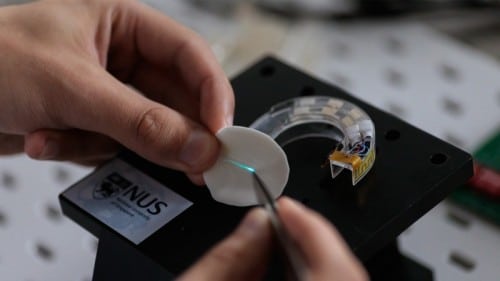Researchers from Singapore have pioneered an interactive mouthguard that could assist individuals with limited hand functions to control electronic devices

It is difficult for individuals with limited hand function or neurological disorders to operate electronic devices. Many technologies were developed to assist such individuals such as voice recognition, eye tracking, and brain-computer interfaces but these technologies faced limitations due to environmental interference, control accuracy, cost, and maintenance. Hence, researchers from the National University of Singapore have invented the first-of-its-kind bite-controlled optoelectronic system to translate complex bite patterns accurately and quickly into instructions to control electronic gadgets. By wearing this smart mouthguard individuals with limited dexterity could control devices such as computers, smartphones, and wheelchairs
“Our bite-controlled optoelectronic system is capable of translating complex bite patterns into data inputs with 98% accuracy. We have also demonstrated that our novel sensors can distinguish mechanical deformations, including strain, compression, and bending, making them applicable to multifunctional mechanical sensing applications, such as miniaturized force sensing, flexible electronics, artificial skin, and dental diagnosis,” explained Prof Liu.
The team first developed a sensor made up of a series of contact pads containing different colored phosphors- these are substances that emit light in response to pressure. The array of contact pads is placed within a flexible mouthguard. These integrated pressure sensors were capable of detecting complex occlusal patterns which are further translated into data inputs with 98% accuracy. Biting results in contact pads mechanically deforming and emitting light in different colors and intensities, this can be measured and processed by implementing machine learning algorithms. The data gathered is further used for high-accuracy remote control and operation of various electronic devices, such as a computer, smartphones, and wheelchairs.
The team envisions designing this smart mouthguard with an irregular arrangement of phosphor-infused pads for users with different tooth patterns or for individuals who wear dentures.
Click here for the Published Research Paper







